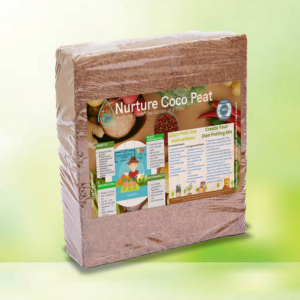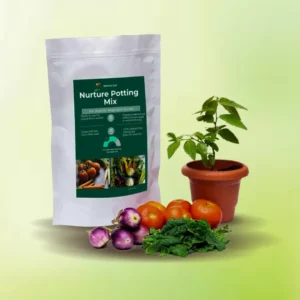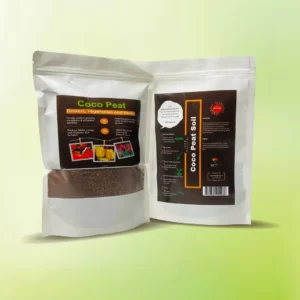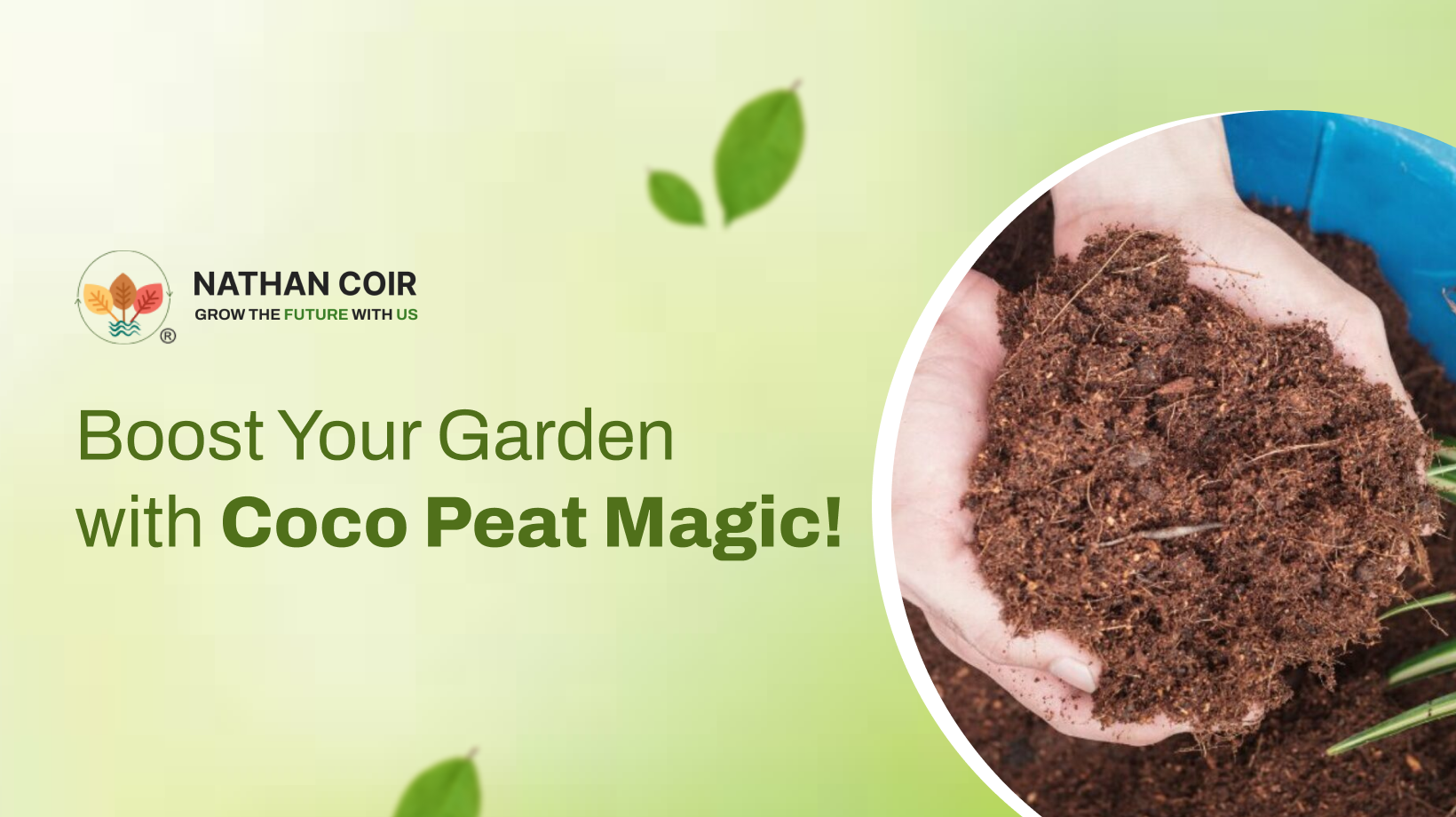Coco Peat, made from coconut husks, has grown in popularity as a sustainable and organic growing medium. Its distinct characteristics, including good water retention and aeration, make it a fantastic choice for gardeners looking to improve plant health. It is critical to prioritize quality while selecting coco peat. Reputable suppliers provide clean coco peat that has been thoroughly processed.
Understanding the Versatility of Coco Peat
Coco peat, derived from coconut husks, introduces a new dimension to gardening. Its versatility caters to all levels of expertise, from novices to seasoned green thumbs. With remarkable water retention and aeration properties, this natural wonder enhances plant growth. In this exploration, uncover how coco peat revolutionizes gardening practices, from enriching soil structure to fostering optimal conditions for various plants. Embrace the potential of coco peat as a sustainable, eco-friendly choice that elevates your gardening journey to new heights.
Introduce the concept of coco peat and its role in gardening.
Start your gardening journey with coco peat soil, a natural wonder derived from coconut husks. This versatile medium excels in water retention and aeration, ensuring your plants receive optimal moisture and oxygen. Whether you’re cultivating flowers, herbs, or vegetables, coco peat enhances root development and overall growth. Its eco-friendly nature adds to its appeal, making it a smart choice for environmentally conscious gardeners. Embrace coco peat and witness your garden flourish like never before.
Highlight its benefits for soil structure, water retention, and plant growth.
Soil Structure:- Enhances soil aeration, preventing compaction and improving root penetration.
Water Retention:- Absorbs and holds water, reducing irrigation frequency and promoting even moisture distribution.
Plant Growth:- Provides essential nutrients, supports healthy root development, and fosters vigorous plant growth.
What is Cocopeat and How is it Processed?
Coco peat, also known as coir pith, is a natural growing medium derived from coconut husks. The process involves collecting husks, soaking them to soften fibers, followed by extraction and drying. Afterward, they are sieved and graded to produce fine coco peat, which is widely used in gardening for its water retention, aeration, and sustainable properties.
Define coco peat and its origin from coconut husks.
Coco peat, or coir pith, is a versatile, nutrient-rich medium sourced from coconut husks. Originating in tropical regions like Southeast Asia, India, and the Caribbean, it’s a byproduct of coconut processing. After retting, decomposing, washing, and sieving, husks transform into coco peat, prized for its exceptional water retention and pH-neutral traits. Its eco-friendliness and resistance to pathogens make it a sustainable choice for gardening, hydroponics, and beyond.
Explain the process of obtaining and processing coco peat.
Obtaining and processing coco peat involves several intricate steps.
We can use infographic image about process.
1.Coconut Husk:- Raw coconut husk is prepared and aged to the optimum moisture content.
2.Processing:- Husk undergoes Defibering process to separate the pith or the peat from the fiber.
3.Peat Manufacturing:- Coco peat then undergoes the curing process to reduce the electrical conductivity and then dried to the optimum moisture condition.
4.Coco Peat:- Coco Peat 5kg blocks are produced at the end for easy handing and shipping.
5.End Uses:- Coco peat has multiple ends uses in Agri-Horticultural market space.
Discuss the different types of coco peat products available.
Various coco peat products cater to diverse gardening needs. Coco peat is available in two main forms:
1.Coco peat bricks are compact blocks that expand when hydrated, offering convenience and easy storage.
2.Dry Coco peat soil is a loose, nutrient-rich substrate sourced from coconut husks. It enhances aeration, water retention, and nutrient availability, fostering robust plant growth in various gardening applications.





The Advantages of Using Coco Peat in Gardening
Transform Your Garden: The Power of Coco Pea – a hidden gem within coconut husks. This natural wonder boasts unparalleled water retention, keeping your plants hydrated and thriving. Its pH-neutral composition creates an optimal growth environment, while its eco-friendliness aligns with sustainable practices. Experience the magic of coco peat as your garden flourishes with newfound vitality, echoing the harmony of nature’s touch.
Explore the various benefits of coco peat for plant growth.
Water Retention Champion:- Coco peat’s exceptional water-holding capacity ensures consistent hydration for plants.
Roots’ Best Friend:- Its airy structure promotes healthy root development and prevents soil compaction.
pH Harmony:- Coco peat maintains an ideal pH level, fostering optimal nutrient absorption.
Nutrient Boost:- Packed with nutrients, it supports robust growth and vibrant foliage.
Pathogen Resistance:- Its natural resistance minimizes the risk of plant diseases.
Eco-Friendly Choice:- Utilizing coco peat contributes to sustainable gardening practices.
Explain how it improves soil structure and porosity.
The secret weapon of gardeners, coco peat, alters soil porosity and structure. Its fibrous composition lightens heavy soils, enhancing drainage and preventing compaction. As it breaks down, coco peat creates air pockets, boosting aeration crucial for root health. This dynamic duo of improved structure and porosity ensures a flourishing garden, where plants take root and thrive in a harmonious soil environment.
Highlight its water retention capabilities and aeration benefits
Water-Wise Wonder:- Coco peat’s sponge-like texture retains water efficiently, reducing the need for frequent irrigation.
A Breath of Fresh Air:- Its light, airy composition fosters optimal aeration by preventing soil compaction and promoting root respiration.
Balanced Hydration:- Coco peat’s water retention and aeration work in tandem, creating a well-balanced moisture environment for plants.
Roots Rejoice:- Improved aeration and moisture control result in robust root systems, fueling healthier and more vigorous plant growth.
Types of Coco Peat: Blocks, Bricks, and Powder
Detail the different forms of coco peat available: blocks, bricks, and powder.
Coco peat comes in versatile forms, catering to varied gardening needs:
Blocks:- Compressed coco peat blocks expand when hydrated, becoming an excellent potting medium.
Bricks:- Smaller, convenient coco peat bricks serve as effective seed starters.
Powder:- Coco peat powder integrates seamlessly into soil, enhancing water retention and aeration.
With these options, coco peat adapts effortlessly to your gardening style, ensuring a thriving and lush botanical haven.
Discuss the pros and cons of each form in different gardening scenarios.
Gardening provides therapeutic nature connections, creating stunning outdoor spaces. Techniques vary, each with pros and cons. Understanding these empowers informed choices for thriving gardens.
Pros:
Flexibility:- Ideal for compact spaces like balconies, patios, or windowsills.
Pest Control:- Mobile containers enable tailored sun exposure and pest defense.
Design Freedom:- Exercise complete artistic control, crafting a unique and visually pleasing garden.
Cons:
Limited Growth:- Container-bound plants might encounter restricted root expansion, influencing vitality.
Watering Challenges:- Containers tend to parch swiftly, demanding consistent watering and drainage care.
Nutrient Constraints:- Gradual nutrient depletion in potting soil necessitates frequent fertilization.
How to Choose the Right Coco Peat for Your Garden
Selecting the ideal coco peat for your garden involves considering factors like plant type, water requirements, and application. Choose fine-textured coco peat for seedlings and coarser varieties for mature plants. Ensure compatibility with your watering routine and preferred gardening style to maximize growth and yield.
Refer to the following guide to choose the right coco peat for your gardening needs:
Low EC for optimal plant growth and nutrient absorption:
Optimal plant growth hinges on maintaining a low Electrical Conductivity (EC). This ensures balanced nutrient absorption, prevents toxicity, and fosters sturdy roots. Regular testing, dilution, and nutrient management are essential for cultivating flourishing gardens and hydroponic systems.
Low Fiber Content for better water retention and aeration.
Opt for low fiber content in your growing medium for improved water retention and aeration. Healthy roots, disease prevention, and consistent growth are among the benefits. Choose wisely and customize mixes.
Ideal pH Range (5.5 to 6.5) for the root zone needs.
Maintaining pH between 5.5 and 6.5 is vital for robust root health. Optimal pH boosts nutrient uptake, supports microorganisms, and prevents disease for thriving gardens.
Convenient bagged, ready-to-use products available for smaller garden setups.
Transform compact gardens effortlessly using pre-packaged, balanced bagged products. Simplify planting, enjoy consistent results, and make the most of small spaces with ready-to-use solutions for raised beds and containers.
Consider the specific needs of your plants before making a choice.
Tailor your gardening choices to your plants’ distinct requirements. From light and water to soil and climate, understanding individual needs ensures a flourishing garden that thrives in harmony and beauty.
Tips for Successful Gardening with Coco Peat
Gardening enthusiasts are increasingly turning to coco peat as a versatile and sustainable growing medium. Derived from coconut husks, coco peat offers numerous benefits that contribute to healthy plant growth and vibrant gardens. Here are some valuable tips to ensure your gardening endeavors with coco peat are a resounding success.
Managing Watering: Provide guidance on efficient watering practices
Proper watering is the cornerstone of successful gardening. Mastering this art ensures thriving plants and bountiful harvests. Here, we unveil essential techniques to optimize watering and nurture your garden’s vitality.
Customized Schedules:- Match water needs with plant types.
Finger Test:- Check soil moisture – dry means water.
Morning Watering:- Maximize absorption, minimize evaporation.
Deep Roots:- Water deeply to encourage strong root growth.
Mulch Benefits:- Conserve moisture, control temperature.
Drip and Soaker:- Precise watering, less wastage.
Rain Barrels:- Harvest rainwater for eco-friendly supply.
Monitor & Adjust:- Adapt to weather and growth changes.
Monitoring Nutrients:– Explain how to supplement nutrients as needed
Ensuring your plants receive the right nutrients is vital for robust growth. Here, we unveil how to effectively supplement nutrients, fostering a thriving garden.
Soil Test:- Detect deficiencies accurately.
Balanced Fertilizers:- Choose N-P-K balanced options.
Slow-Release:- Gradual nutrients, less waste.
Organic Boost:- Compost or manure for soil health.
Foliar Spray:- Direct leaf absorption for quick fixes.
Companion Plants:- Natural soil enrichment.
Seasonal Care:- Adjust nutrients as plants grow.
Avoid Overuse:- Follow guidelines to prevent harm.
Mulch Benefits:- Nutrient-rich mulching.
Monitor Continuously:- Adapt for optimum health.
Nourish your garden smartly for vibrant, flourishing results.
Preventing Compaction: Offer tips to prevent soil compaction in potted plants.
The success of your potted plants depends not only on proper watering and sunlight but also on the health of their root systems. One often overlooked factor that can impact root health is soil compaction. Compacted soil restricts air and water movement, hindering root growth and overall plant vitality. Below content, we’ll explore effective tips to prevent soil compaction and ensure your potted plants thrive to their fullest potential.
Right Soil Mix:- Draining, lightweight mix.
Appropriate Pot Size:- Space for root growth.
Aerate Gently:- Enhance air and water flow.
Avoid Overwatering:- Prevent soil saturation.
Mulch:- Retain moisture, reduce compression.
Repot:- Refresh soil, give roots more room.
Smart Placement:- Protect from foot traffic.
Root Pruning:- Stimulate growth, prevent compaction.
Raised Beds/Planters:- Improve drainage, structure.
Light Tilling:- Break up compaction, aid roots.
By implementing these measures, you can maintain loose, airy soil in your potted plants, ensuring their roots have the space they need to thrive and promoting healthy growth.




